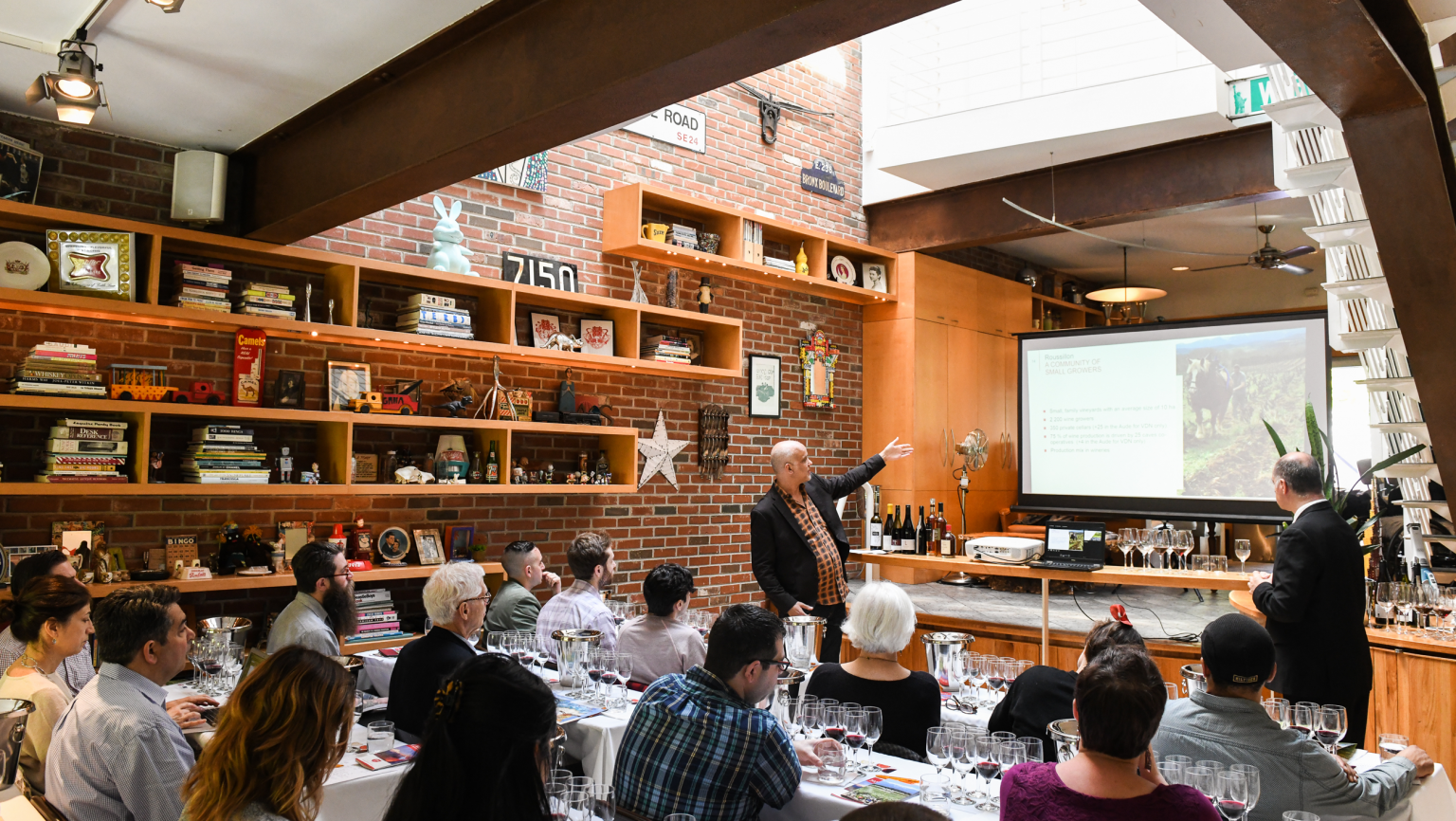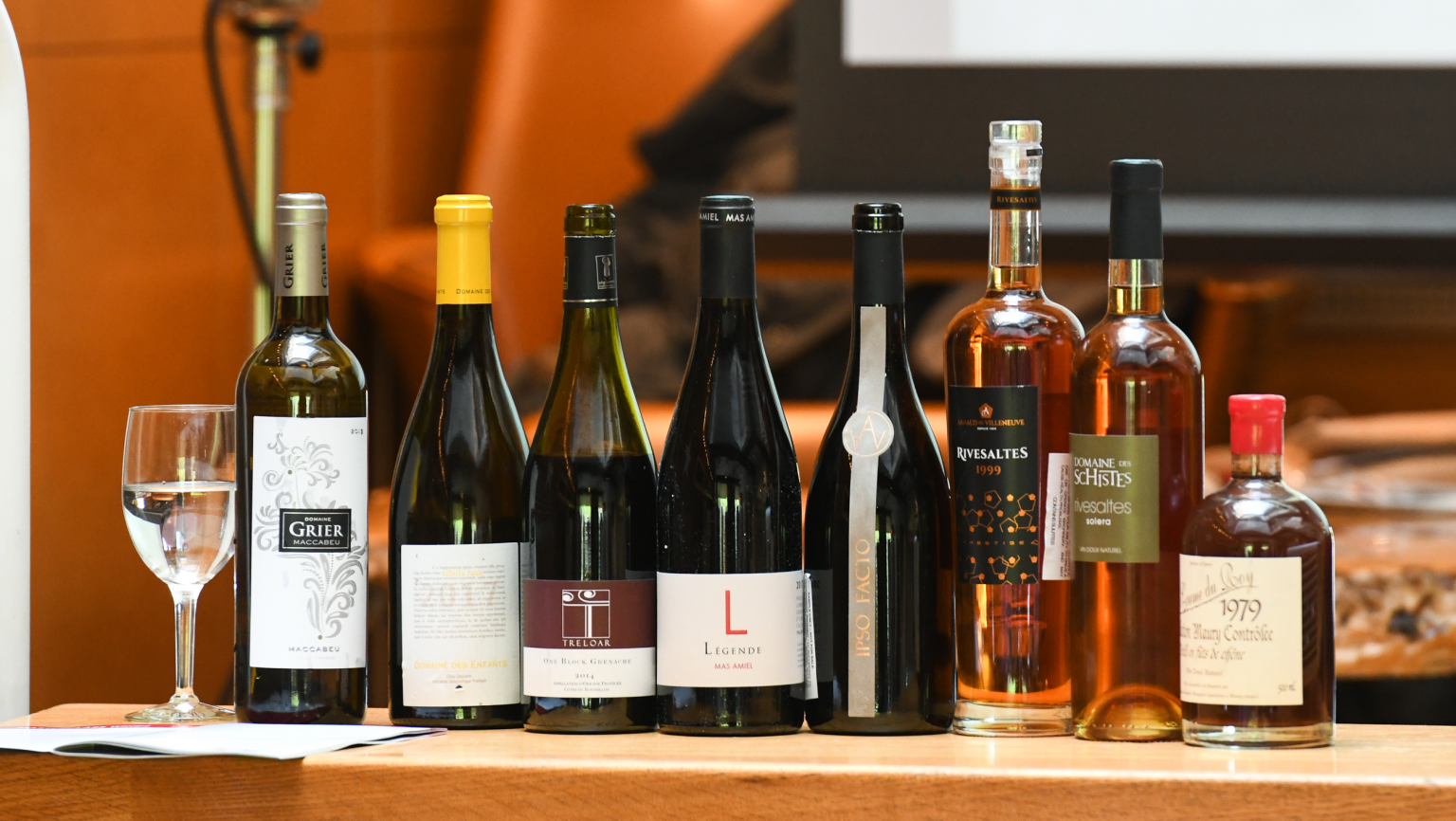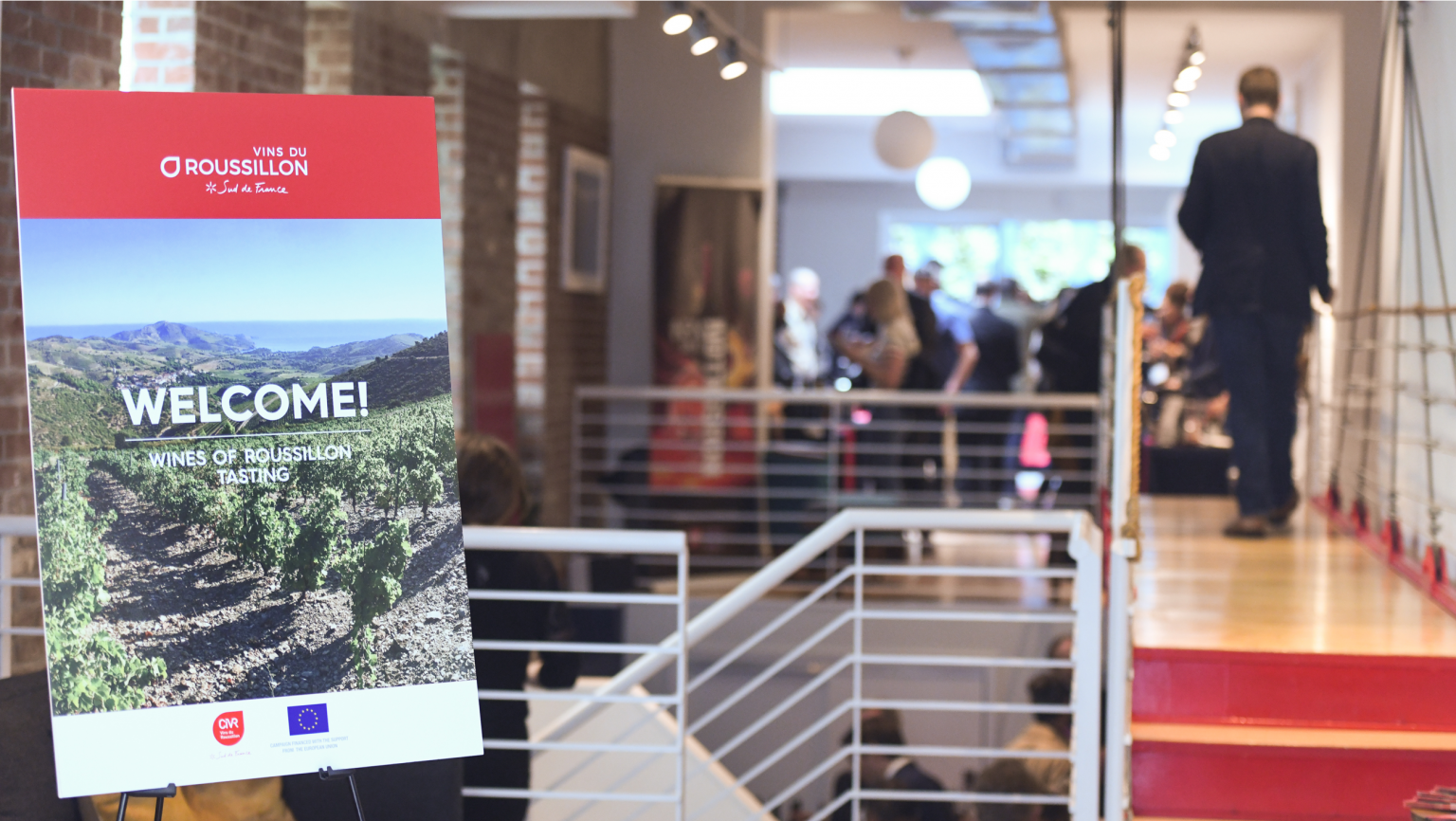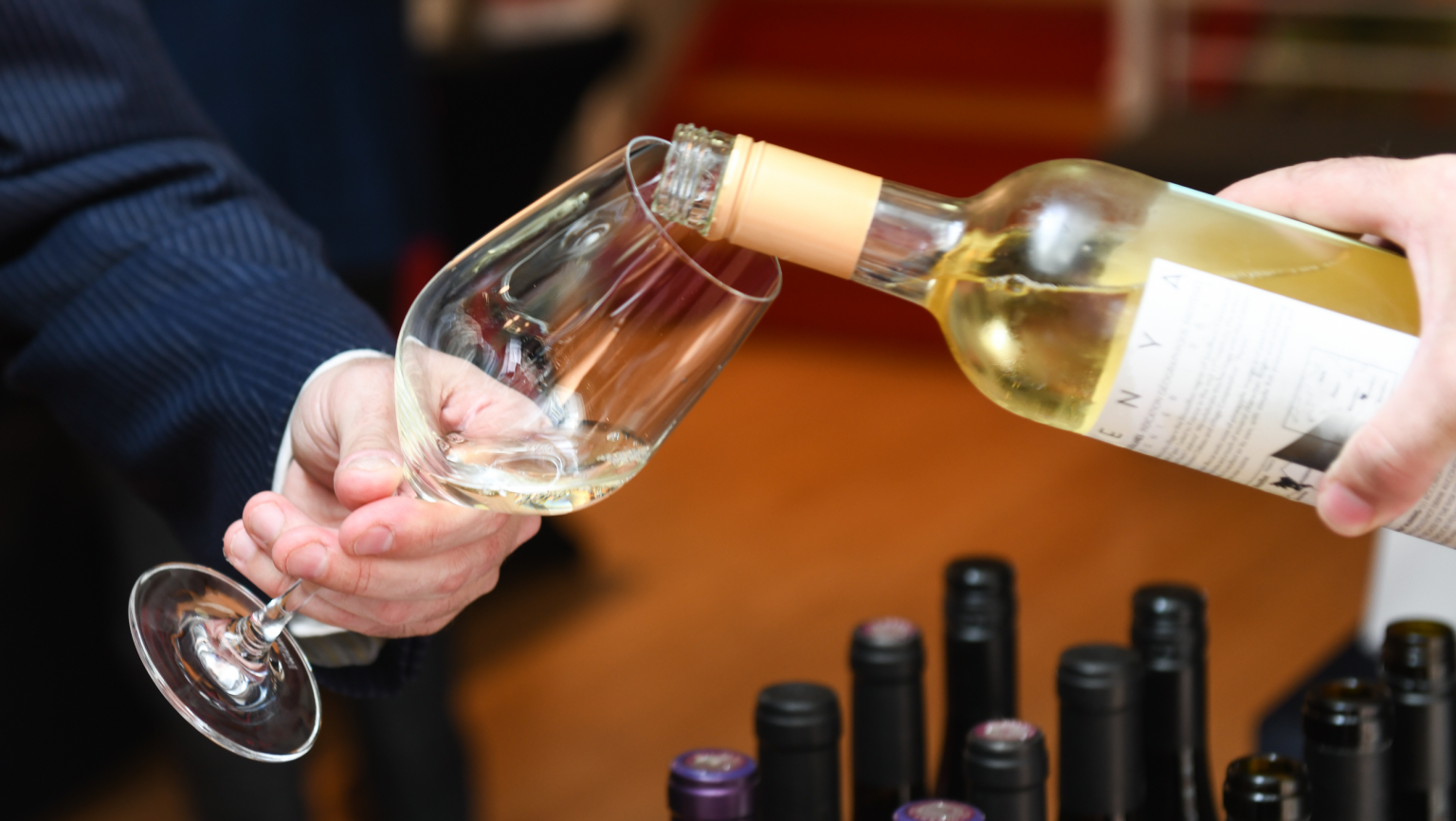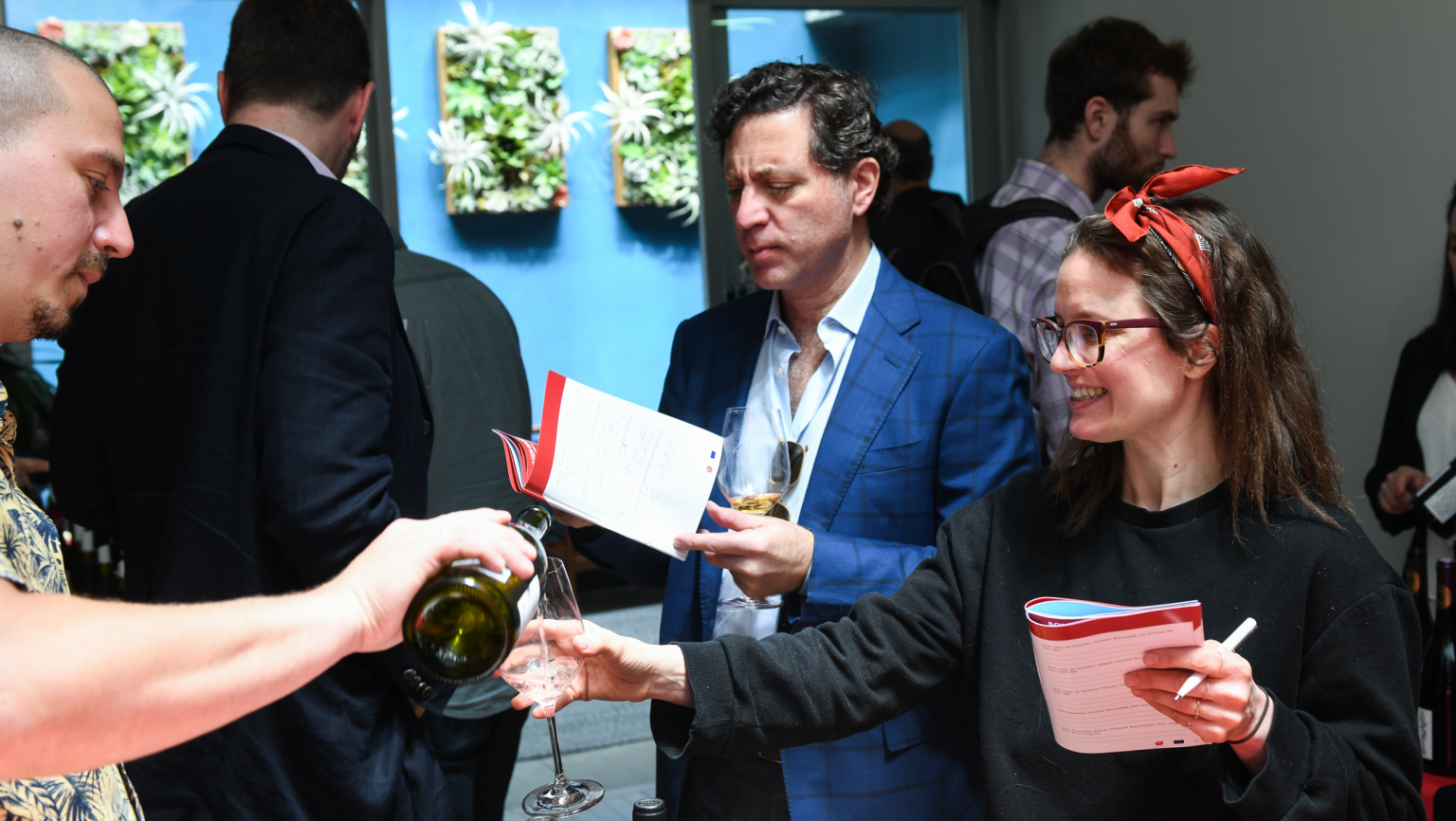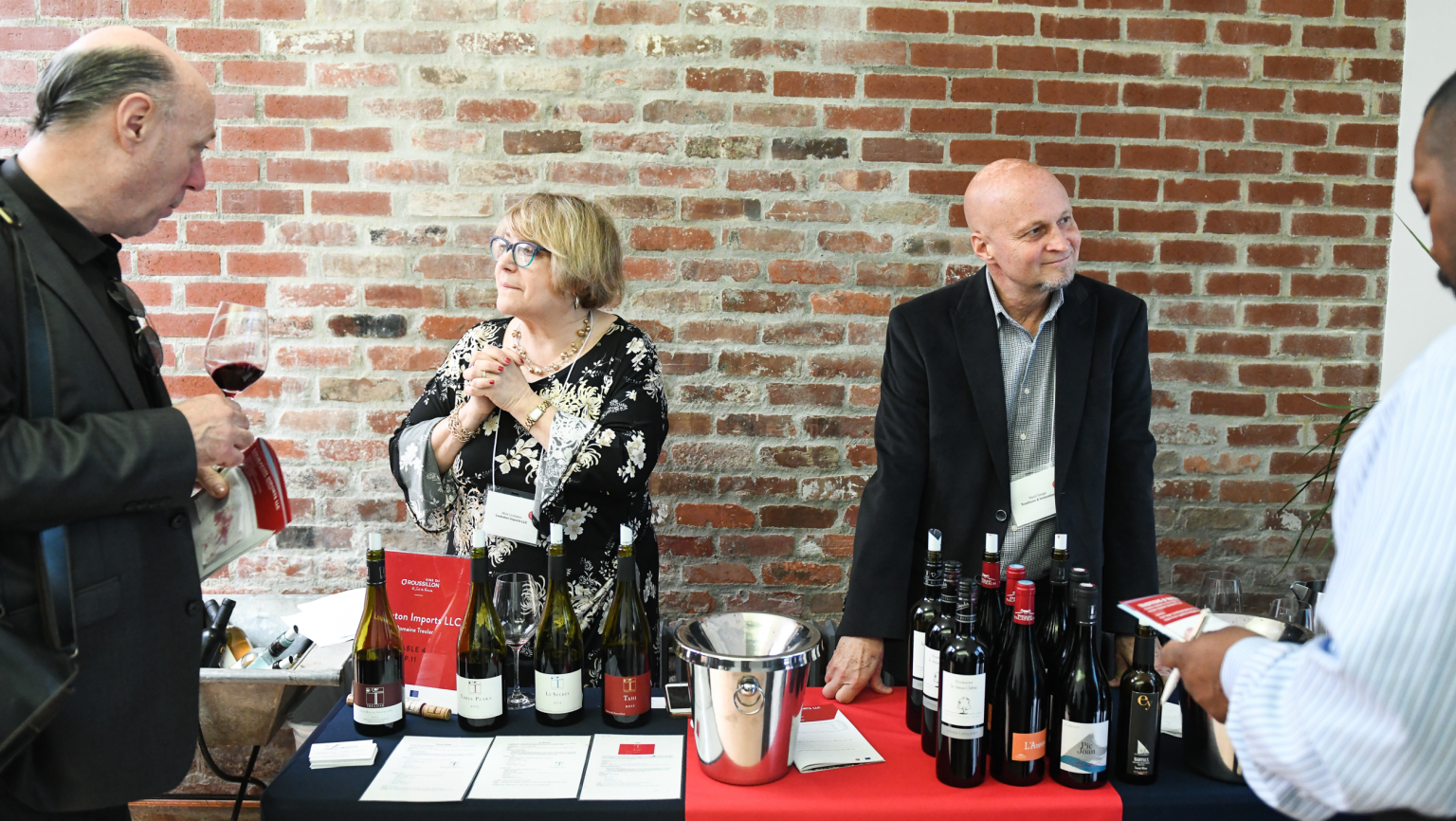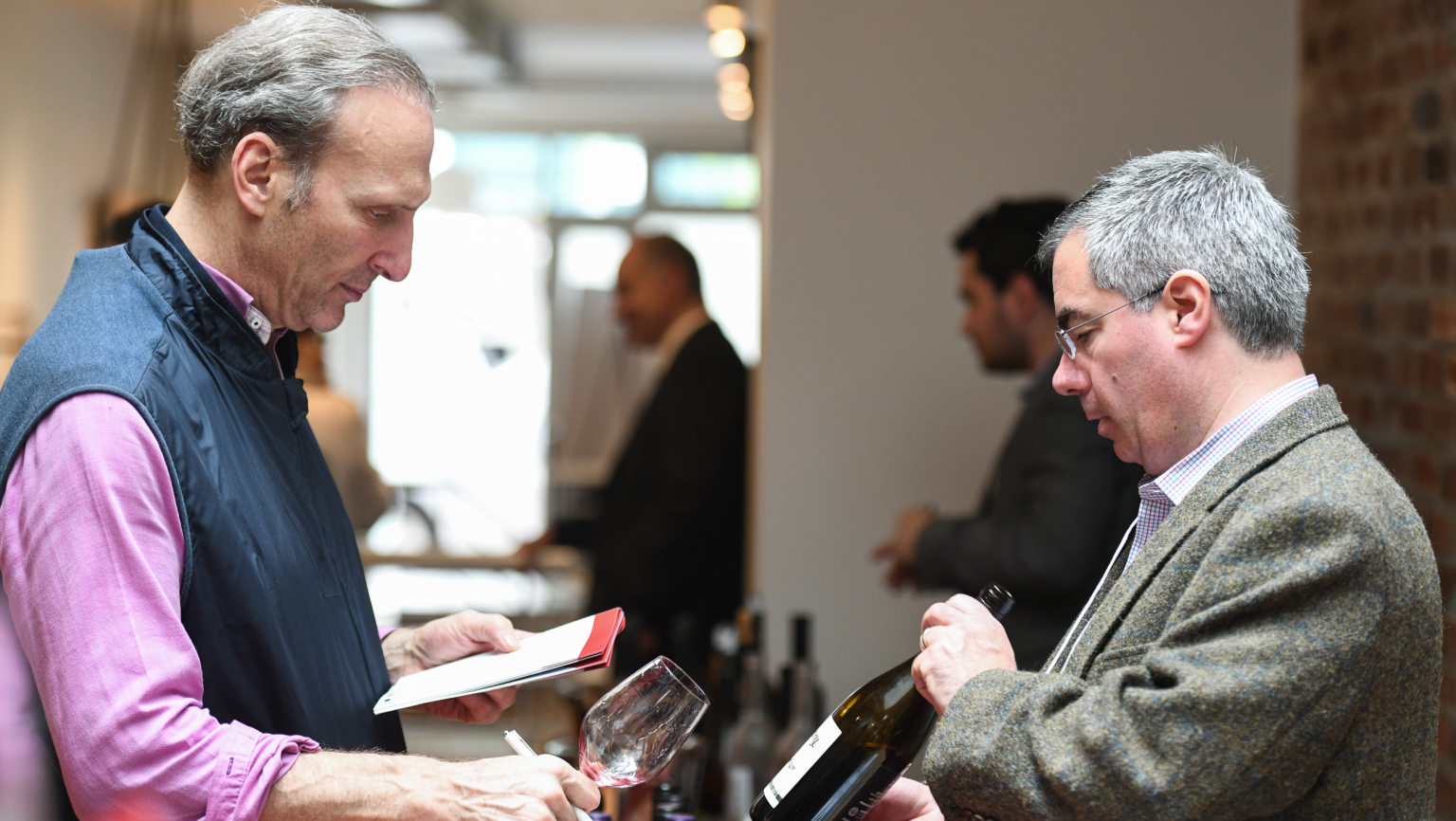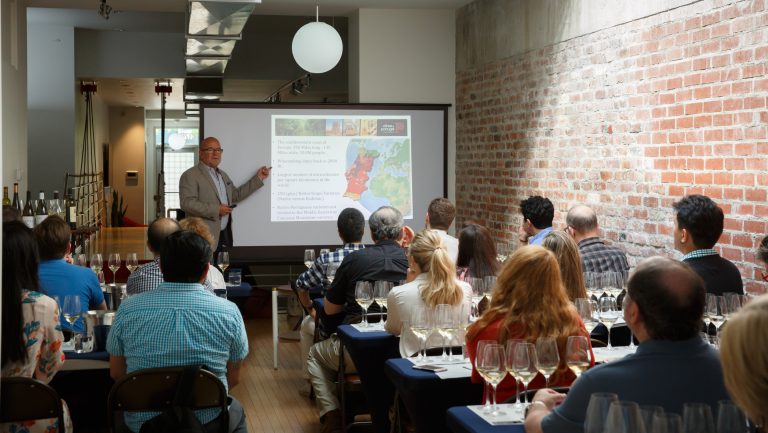This advertising content was produced in collaboration with SevenFifty and our sponsor, the Conseil Interprofessionnel des Vins du Roussillon; it does not necessarily reflect the views of SevenFifty Daily’s editorial team. For more information, please refer to our ethics guidelines.
Eric Aracil, the export director of the Conseil Interprofessionnel des Vins du Roussillon, is a Roussillon native and an enologist, and he is the first to tell you his homeland is a winemaker’s paradise. There’s evidence to back him up—scores of winemakers have flocked to this remote corner of France for the dramatic landscapes, near-perfect, sunshiny weather, and opportunities to make a diverse range of wines. “It’s like an El Dorado for wine,” said Raphaël Graugnard, the winemaker for Domaine Grier in Saint-Paul-de-Fenouillet, who was one of 15 producers representing the region at a Wines of Roussillon master class and walk-around tasting on May 6 at SevenFifty House in Manhattan.
Séverine Bourrier, the winemaker of Château de L’Ou in Montescot, agreed. She’s a transplant from Bordeaux who became completely enamored of Roussillon. “It’s like a diamond with many facets of climate, terroir, and grapes,” she said. “There is a lot for everyone.”
That was the message passed on to wine buyers during the event’s opening seminar, presented by Aracil and Jeff Harding, the beverage director at New York’s Waverly Inn. Harding, who has lived in Southern France, is a longtime fan of Roussillon wines for their understated quality and the value they bring to wine programs. “You can find a fantastic white wine in Burgundy for $155 and one in Roussillon for [far less] that will be more textural and more exotic,” he said. “What else do you find in that price range that’s so intriguing?”

Don’t miss the latest drinks industry news and insights. Sign up for our award-winning newsletters and get insider intel, resources, and trends delivered to your inbox every week.
Situated in the Pyrénées-Orientales near the Spanish border, Roussillon, with an amphitheater-like site located between sea and mountains, is where French and Catalan cultures intersect. Trade winds cross the region, reducing humidity, disease pressure, and the need for chemical intervention and helping to make this area France’s number one wine region for organic and biodynamic viticulture.
The vineyards, said Aracil, “are dedicated to the terroir notion, with amazing soil and subsoil. We don’t have to brag about it—it’s a fact.” The combination of diverse soils—from iron-rich limestone and granite to four kinds of schist—and a variety of altitudes, from sea level to high plateau, gives the region a lot of material to work with.
Wine buyers at the tasting learned that the styles of the region’s wines are just as varied: There are 24 grape varieties—featured in 16 AOPs and IGPs—of which 13 appear in dry wines and 5 in vins doux naturels, the long-aging, lightly fortified sweet wines for which the region is best known. Aracil noted that Roussillon is unique in its huge range of wine styles. “We are able to produce almost everything from [everyday] to high level,” he said. Harding concurred, saying, “You’ll see that in this region all the wines are substantial, even those that are fresh, and will not get lost with food. They’re serious, complex, and layered, but not so much that you can’t enjoy them.”
Harding places Roussillon reds adjacent to Châteauneuf-du-Pape on his list, and he told attendees that such positioning puts guests in the South-of-France mind-set. “They have similar grapes to the Rhône,” said Harding, “and the wines are really well made, at half the price.”
In the United States, the most common vins doux naturels are Rivesaltes, Maury, and Banyuls, which deliver uncommon expressions ranging from preserved citrus and figs to richer rancio and notes of salted caramel. The U.S. is the fourth-largest importer by volume of these Roussillon fortified sweet wines, and volume sales have increased by 17 percent since 2012.
Harding told the wine buyers that he sells Roussillon vins doux naturels by relating them to flavors that are touchstones in the popular imagination. “We’re already eating snacks like salted caramel and spiced pumpkin; these flavors are good gateways to Rivesaltes,” he said, adding that “the wines are not too far off from tawny port, so when you have that table of four Wall Street guys, you have an opportunity to step in and guide them to something else.”
Michel Sanac, the winemaker at Domaine Sanac in Saint-Génis-des-Fontaines, said that though his is a small region, it has “a lot to offer beyond our reputation of vins doux naturels.” Of 2,200 growers, many are small family wineries of 10 hectares or less, many of which are worked manually because of the nature of the old vines—some that are more than 150 years old. Quality co-ops drive about 75 percent of the production.
Gaetan Pierre, the export director for Rivesaltes’s Arnaud de Villeneuve, said that producers in Roussillon are committed to sustainable agriculture and development, and to clearly identifying best practices for their parcels. Much of the production is artisanal in philosophy. Harding agreed. “There are so many well-made wines [here],” he said, “that overdeliver, are accessible to the general public, and are a great value for the buyer. They’re a way to get in good with your customer, even if you work in a snooty place, and nudge them to a bigger and better experience.”
Producers represented at the Wines of Roussillon master class and walk-around tasting:
Arnaud de Villeneuve
Château de l’Ou
Domaine Boucabeille
Domaine Grier
Domaine Sanac
Frederick Wildman & Sons
Fruit of the Vine
Hand Picked Selections
Loubaton Imports
Serge Doré Selections, Ltd.
SolStars Wines
Traditions & Innovations
Vision Wines & Spirits
Wineberry

Dispatch
Sign up for our award-winning newsletter
Don’t miss the latest drinks industry news and insights—delivered to your inbox every week.


